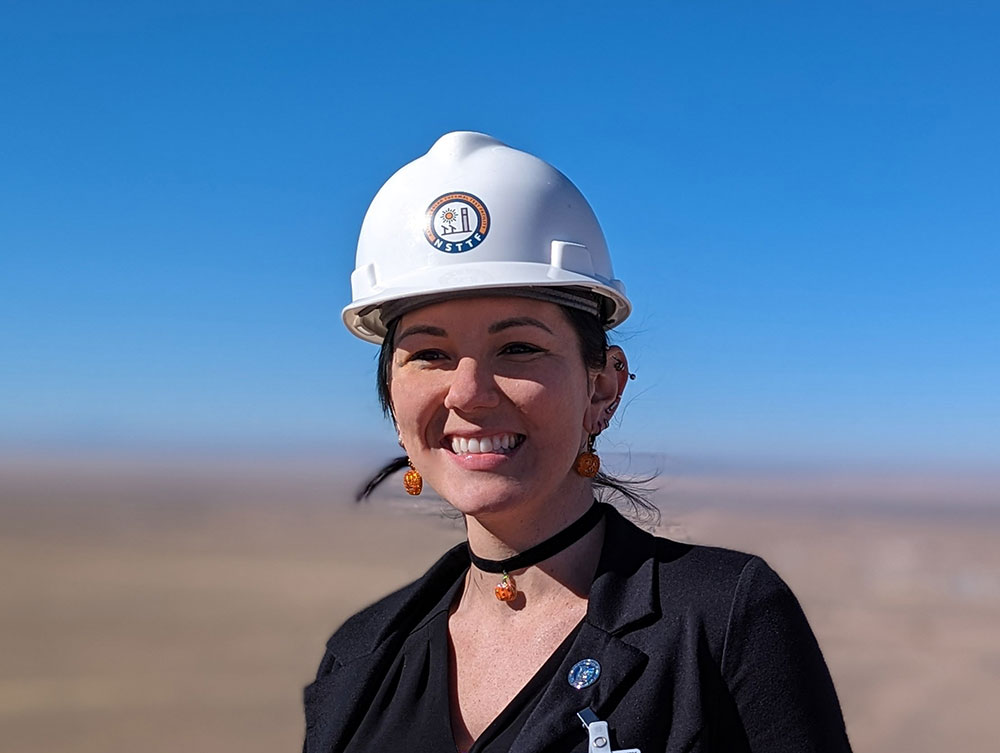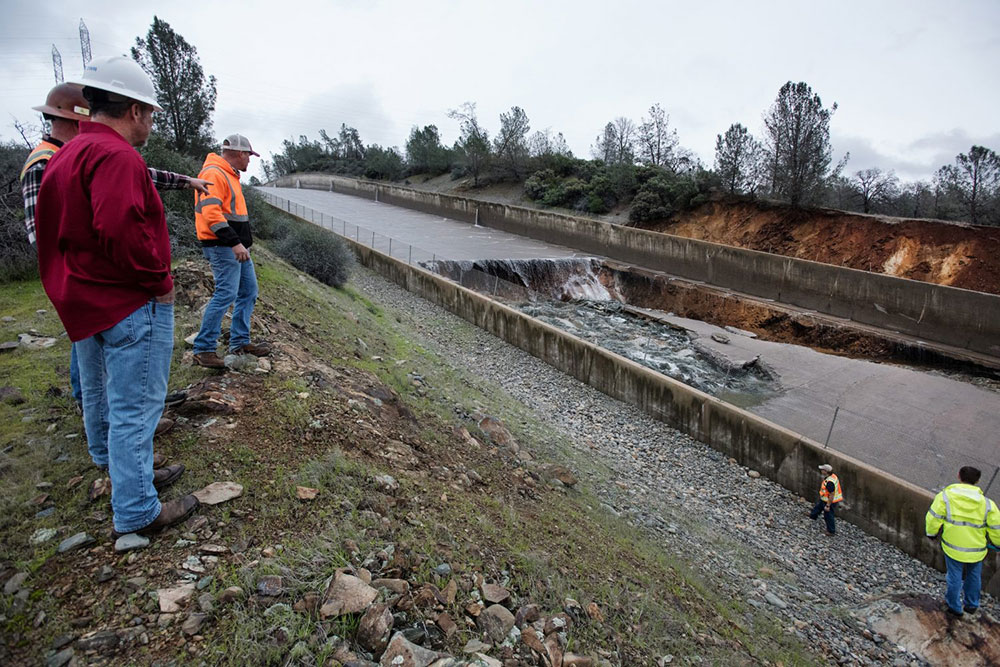
The forecast is decidedly not favorable if climate change continues unaddressed.
In a talk at Sandia on Nov. 1, meteorologist Sunny Wescott presented on extreme weather hazards made more extreme by climate change — wildfires, floods, droughts, extreme heat and extreme cold — painting a picture of their intensifying toll on agriculture, transportation, manufacturing and public health.
The discussion that followed was notable for audience members who expressed both gratitude and alarm. Two called the presentation “terrifying.” A third deadpanned, “Are you saying we might be in trouble?”
Wescott, the lead meteorologist for the Cybersecurity and Infrastructure Security Agency in the Department of Homeland Security, emphasized that most of today’s infrastructure was built for resilience using standards and historical data that don’t address the frequency or severity of hazards emerging now.
“I think my mission is getting people to understand that,” she said in an interview with Lab News after her talk. “We weren’t paying attention to certain underlying effects, and now we’re going to pay the price at an expedited speed. Had we been paying attention, we would have seen this coming like a shockwave.”
Wescott’s was the 12th talk this year to be presented by Sandia’s Climate Speaker Series, which began bringing external speakers to Sandia in early 2022 to promote engagement and discussion on topics related to the Labs Climate Security Strategy. In 2023, speakers have included top climate advisers and researchers from the National Oceanic and Atmospheric Administration, NASA, the National Renewable Energy Laboratory and multiple universities and research institutions. The combined attendance for these events is about 4,500.
“The Climate Speaker Series has brought in a top-tier slate of guests to discuss some of the biggest challenges — and greatest opportunities — we face as a nation in addressing climate security,” said Rob Leland, leader of the Labs Climate Security Strategy and director of the Climate Change Security Center. “Not only does the series enhance Sandia’s visibility as a leader in the climate domain but it also creates new opportunities for engagement and partnerships that will increase our climate change-related impact.”
Some talks, like Wescott’s, assess the scale and urgency of the climate problem; others explore the possibilities presented by the emerging science and engineering devoted to potential solutions.

On Nov. 6, Boston University climate researcher and social scientist Benjamin Sovacool visited the New Mexico site for a talk that touched on the technical and social challenges facing a wide range of carbon-removal and radiation-management interventions. His team has visited direct carbon capture facilities in Canada and Iceland, toured a seagrass nursery in Wales and witnessed marine cloud brightening operations over Australia’s Great Barrier Reef. The team’s research indicates that there is not yet a broad consensus on the desirability of such approaches.
“Most key stakeholders haven’t made up their mind,” Sovacool said. “It’s not determined, which means it could be shaped in the next five or 10 years by research patterns, deployment patterns or major policies.”
Also in November, the series presented Amanda Staudt and Apurva Dave, both in climate leadership positions at the National Academies of Sciences, Engineering and Medicine. Their talk focused on new climate and climate-related security activities at NASEM.
The 2024 Climate Speaker Series is still being developed, with Melanie Kenderdine, a principal of the Energy Futures Initiative, and Milind Tambe, professor and director of the Center for Research on Computation and Society at Harvard University, already on the schedule. To nominate a speaker, please contact Dylan Poindexter. Watch recordings of previous Climate Speaker Series events, and find more news and events about Sandia’s work in energy and climate security.